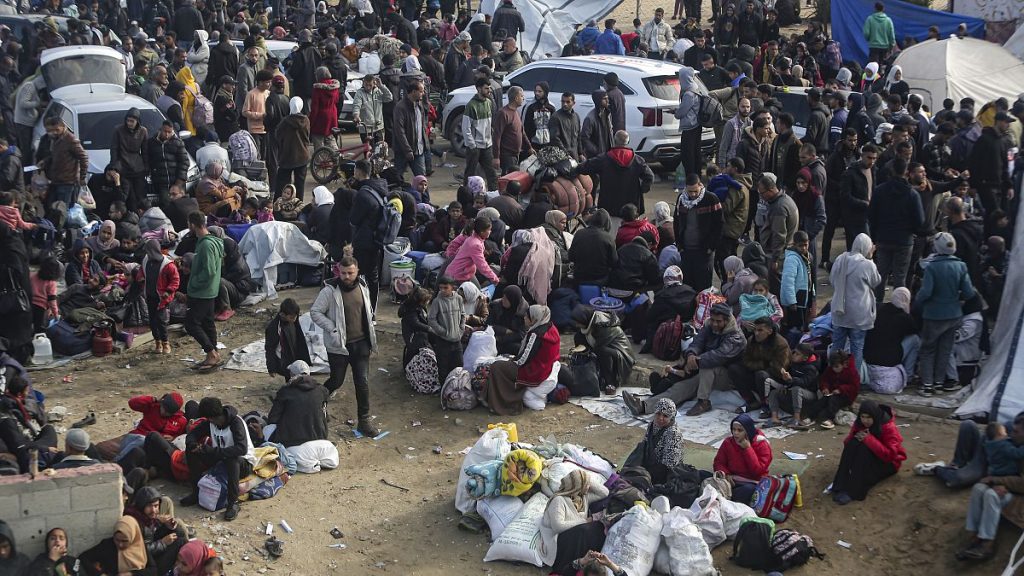The recent ceasefire agreement between Israel and Hamas, brokered by Qatar, Egypt, and the United States, marked a turning point in the devastating conflict that erupted in October 2023. The agreement’s initial implementation, however, faced immediate challenges centered around the release of hostages and the return of displaced Palestinians to their homes in northern Gaza. This initial hurdle underscored the deep mistrust and complex dynamics at play, even amidst efforts to de-escalate the violence. The Israeli government, led by Prime Minister Benjamin Netanyahu, initially conditioned the return of displaced Palestinians on the release of Israeli civilian hostage Arbel Yehoud, held by Hamas. This linkage illustrated the interconnected nature of the issues and the fragility of the ceasefire’s early stages. The situation highlighted the high stakes involved and the difficult balance between humanitarian concerns and security considerations for both sides.
Following intense negotiations, a breakthrough was achieved, leading to an agreement on the release of hostages and the return of displaced Palestinians. Hamas agreed to release Arbel Yehoud, along with two other individuals, Agam Berger being one of them. This concession paved the way for Israeli authorities to permit the return of Palestinians to northern Gaza. The agreement demonstrated the crucial role of international mediation in facilitating dialogue and finding common ground, even in the most intractable conflicts. The phased approach, with the hostage release preceding the return of displaced persons, reflected the delicate nature of the agreement and the need to build trust between the parties. The successful implementation of this initial phase marked a significant step towards stabilizing the ceasefire and addressing the urgent humanitarian needs of the affected population.
The return of displaced Palestinians to northern Gaza signified a critical step towards normalcy and recovery in the war-torn region. Hundreds of Palestinians, eager to rebuild their lives and homes, gathered in anticipation of crossing back into the northern part of the Strip. Their stories reflected the profound impact of the conflict on their lives, the destruction of their homes, and the uncertainty of their future. The return, though fraught with challenges, represented a glimmer of hope amidst the devastation. Their determination to return, despite the destruction, highlighted the deep connection to their land and their resilience in the face of adversity.
However, the complex political landscape remained a significant obstacle to lasting peace. US President Donald Trump’s controversial suggestion that neighboring countries take in Palestinians to “clean out” Gaza sparked widespread criticism and further complicated the already delicate situation. His remarks, which characterized Gaza as a “demolition site,” were met with strong opposition from Hamas, the Palestinian Authority, Jordan, and Egypt. These comments highlighted the divergent perspectives on the conflict and the ongoing challenges in finding a sustainable solution. The international community’s rejection of Trump’s proposal underscored the importance of upholding Palestinian rights and the need for a comprehensive approach to resolving the conflict.
Egypt’s condemnation of Trump’s remarks, though indirect, emphasized the importance of respecting Palestinian rights and the need for a two-state solution. This stance reflected the broader international consensus on the need for a just and lasting resolution to the conflict, based on international law and the principles of self-determination. Egypt’s call for the international community to actively pursue the two-state solution highlighted the need for a concerted global effort to achieve lasting peace in the region. The statement reinforced the importance of a negotiated settlement that addresses the legitimate aspirations of both Israelis and Palestinians.
The devastating impact of the war in Gaza underscored the urgent need for a comprehensive and lasting solution to the Israeli-Palestinian conflict. The conflict, triggered by Hamas’s cross-border attack into Israel, resulted in a staggering loss of life on both sides, with a disproportionate impact on Palestinian civilians, particularly women and children. The sheer scale of the destruction and the human toll highlighted the devastating consequences of the ongoing conflict and the urgent need for a peaceful resolution. The international community’s efforts to broker a ceasefire and provide humanitarian assistance were crucial in mitigating the immediate suffering, but the underlying issues that fuel the conflict remained unresolved. The conflict’s impact extended beyond the immediate region, destabilizing the Middle East and sparking global protests, highlighting the interconnected nature of global security and the need for a comprehensive, internationally-backed peace process.














